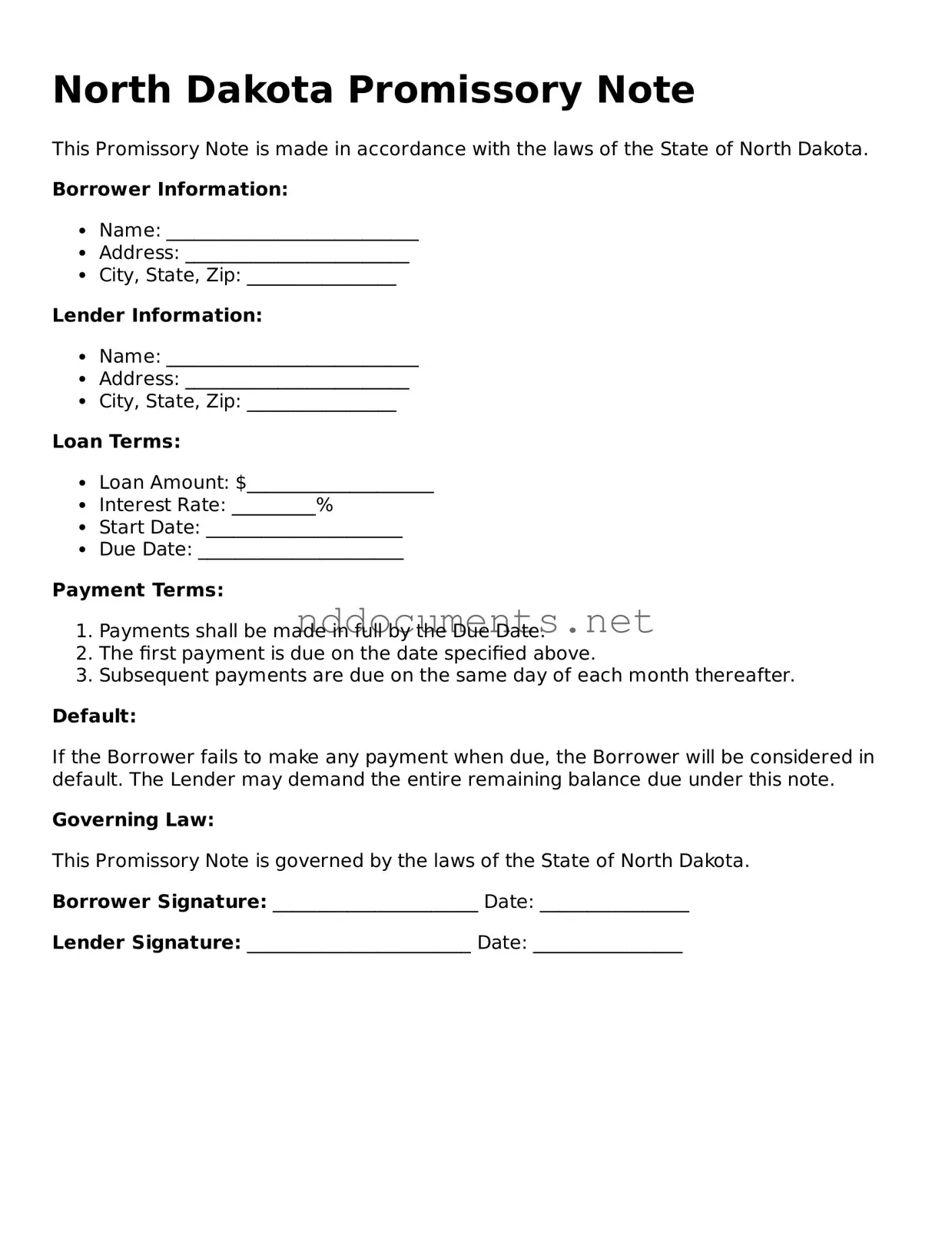Fillable Promissory Note Document for North Dakota
A North Dakota Promissory Note is a legal document that outlines a borrower's promise to repay a specified amount of money to a lender under agreed-upon terms. This form serves as a written record of the debt, detailing important elements such as the loan amount, interest rate, and repayment schedule. Understanding this document is crucial for both borrowers and lenders to ensure clarity and enforceability in financial transactions.
Make Your Document Online
